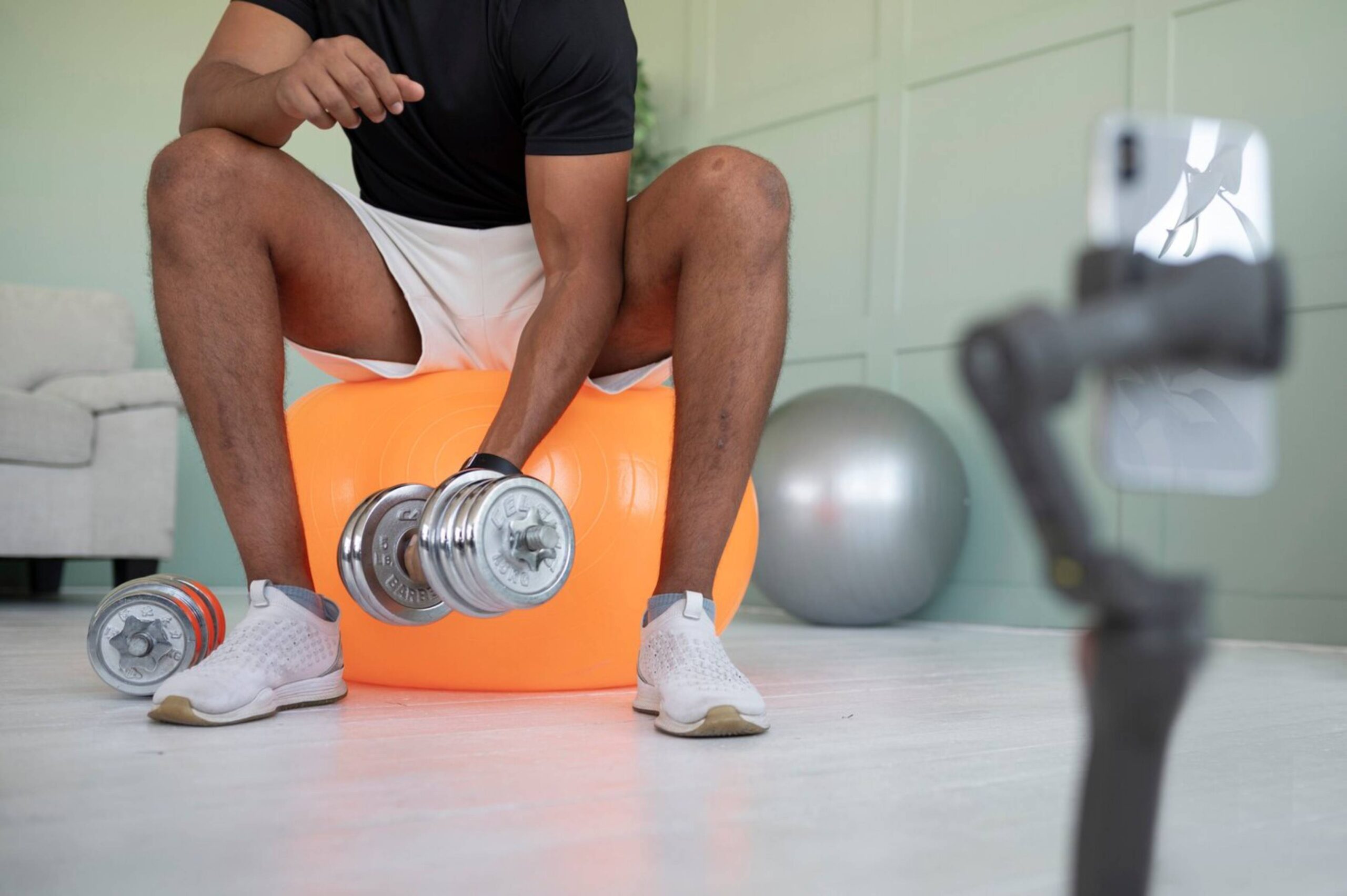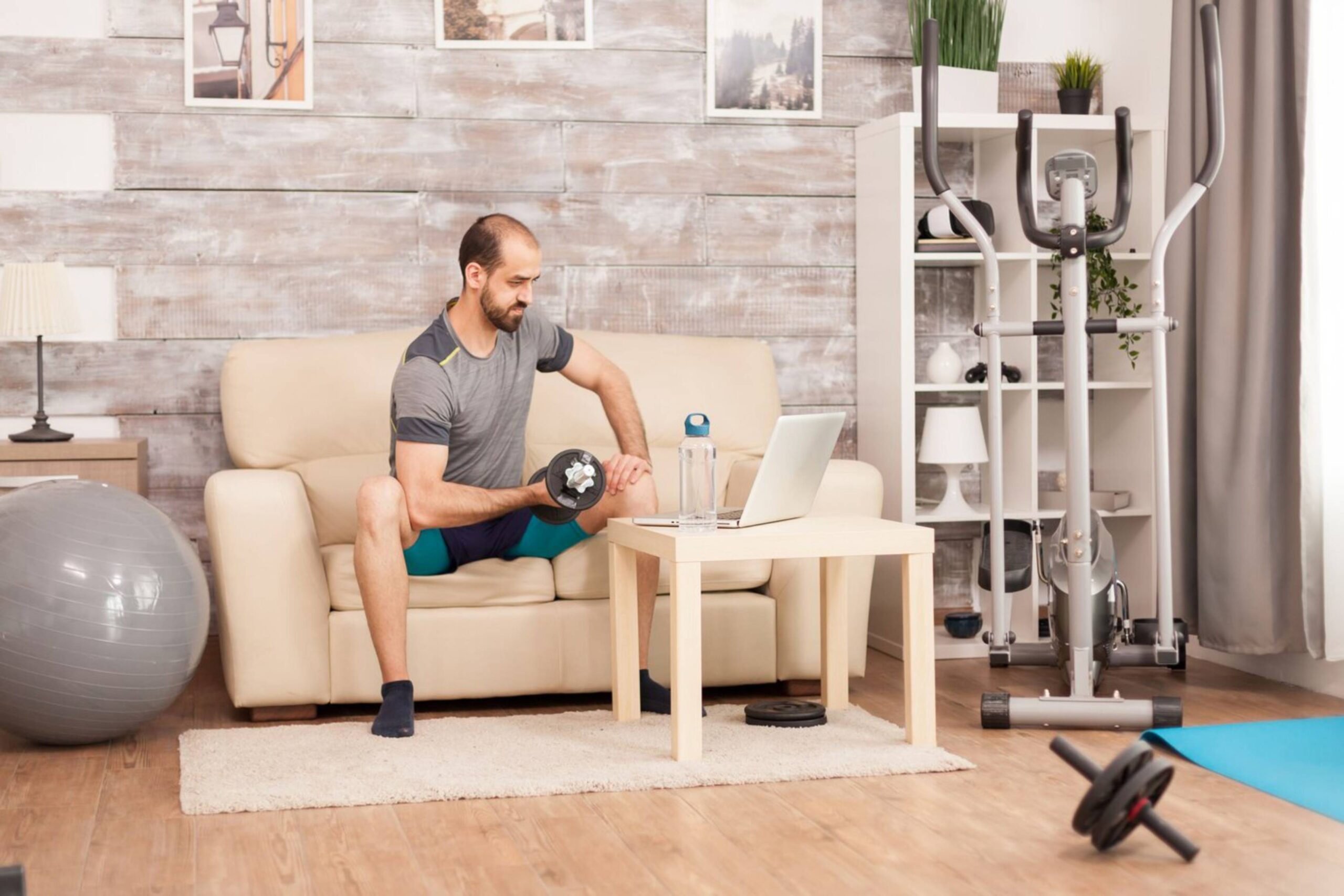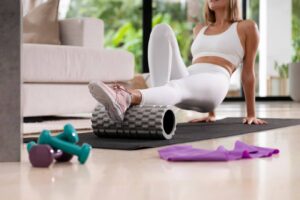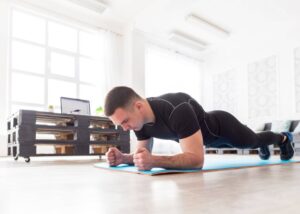The Fitness & Bodybuilding Blog

Full-Body Dumbbell Workout Plan for Beginners
In recent years, many people have turned to home strength training. This trend is especially popular among new trainees who want to build muscle and stay fit without paying for a gym membership. The dumbbell is one of the most accessible and versatile tools for home strength training. You can train all major muscle groups with it. So, it’s a great addition to your home gym for a full-body workout. In this blog, we’ll look at a full-body dumbbell workout plan made for beginners. We’ll talk about why dumbbell workouts are important. We’ll also cover the benefits of strength training at home. Plus, we’ll share an easy workout plan for beginners to start your fitness journey.
The Importance of Dumbbell Workouts

Strength training is key. These six dumbbell workouts are essential for building strength. They’re effective for novices and experienced athletes. There are various benefits to these exercises. They are fantastic for strength, muscle tone, and general fitness. That is why dumbbell workouts are important, and here are the reasons.
Versatility and Accessibility
The versatility of dumbbell workouts is one of their biggest benefits. You can do so many exercises with dumbbells. They differ in muscle groups and the amount of intensity you can apply when using them. Whatever body part you want to target—arms, chest, back, legs, or core—there’s a dumbbell exercise for you. Dumbbells are inexpensive and take up little space. That makes them ideal for anyone looking to dive into strength training at home.
Improved Muscle Balance and Coordination
Exercises using dumbbells target multiple muscle groups at a time. This helps stabilise muscle balance and coordination. It focuses on movement, unlike machines that isolate. For newbies, especially, this is critical for building a good base and avoiding injury. More dumbbell exercises will enhance your functional fitness. This simplifies and streamlines daily tasks.
Progressive Overload and Adaptability
Strength training hinges on progressive overload. This is a good use of dumbbells — a useful tool in this training. Slowly increase the dumbbell weight or the reps. That way, you put your muscles to work and support their growth. They’re perfect if you’re not very experienced; they may begin with lighter weights. Over time, that weight can be slowly progressed as strength and confidence improve.
Why Home Strength Training Matters
Home strength training has many benefits, making it a great choice for beginners. Here are some reasons to add dumbbell workouts to your home fitness routine:
Convenience and Flexibility

Convenience is one of the biggest advantages of strength training at home. You can work out from your couch. There’s no need for a gym membership or trips to a fitness club. Just grab a pair of dumbbells and get started! This variety allows you to squeeze workouts into your schedule. It helps to keep you on track with your fitness goals.
Cost-Effectiveness
Buying dumbbells is a smart way to set up your gym and start strength training. Investing in a set of dumbbells is a one-time investment. That is better than a monthly payment for a gym. Dumbbells also provide long-term benefits. You can also scale your home gym over time. Do some workouts with just resistance bands or a stability ball. You will have to vary your workouts, too.
Privacy and Comfort

Many new members find the thought of exercising in a packed gym intimidating. Home strength training allows you to exercise in a personal, comfortable environment. You can do so without distraction or worrying about how your appearance is coming across. This boosts your confidence and motivation. As a result, you can focus better on your workouts and reach your fitness goals.
Beginner Workout Plan: Full-Body Dumbbell Routine
Let’s dive into an easy full-body dumbbell workout for beginners. You’ll see the benefits of dumbbell exercises and home strength training. This is a balanced and effective workout for beginners as it targets all major muscle groups. Be sure to use low weights and focus on proper form to avoid injury and increase your results.
Warm-Up
Before starting your workout, it’s essential to warm up your muscles and prepare your body for exercise. Spend 5-10 minutes on dynamic stretches or light cardio. You can jog in place or do jumping jacks. This will raise your heart rate and loosen your muscles.
Workout Plan
1. Dumbbell Squats
- Target Muscles: Quadriceps, hamstrings, glutes
- Repetitions: 3 sets of 10-12 reps
Stand with your feet shoulder-width apart, holding a dumbbell in each hand at your sides. Lower your body into a squat position, keeping your chest up and your knees aligned with your toes. Push through your heels to return to the starting position.
2. Dumbbell Bench Press
- Target Muscles: Chest, triceps, shoulders
- Repetitions: 3 sets of 10-12 reps
Lie on a flat bench with a dumbbell in each hand, arms extended above your chest. Lower the dumbbells to the sides of your chest, then press them back up to the starting position.
3. Dumbbell Bent-Over Rows
- Target Muscles: Back, biceps, shoulders
- Repetitions: 3 sets of 10-12 reps
Stand with your feet shoulder-width apart, holding a dumbbell in each hand. Bend at the hips and knees, keeping your back straight, and let the dumbbells hang in front of you. Pull the dumbbells to your waist. Squeeze your shoulder blades together. Then, lower them back to the start.
4. Dumbbell Shoulder Press
- Target Muscles: Shoulders, triceps
- Repetitions: 3 sets of 10-12 reps
Sit or stand with a dumbbell in each hand, arms bent at 90 degrees and palms facing forward. Press the dumbbells up until your arms are straight. Then, lower them back to start.
5. Dumbbell Lunges
- Target Muscles: Quadriceps, hamstrings, glutes
- Repetitions: 3 sets of 10-12 reps per leg
Stand with your feet together, holding a dumbbell in each hand. Step forward with one leg and lower your body until both knees are bent at 90 degrees. Push through your front heel to return to the starting position, then repeat with the other leg.
6. Dumbbell Bicep Curls
- Target Muscles: Biceps
- Repetitions: 3 sets of 10-12 reps
Stand with your feet shoulder-width apart. Hold a dumbbell in each hand, with your palms facing forward. Curl the dumbbells up to your shoulders. Keep your elbows close to your body. Then lower them back to the start.
7. Dumbbell Tricep Extensions
- Target Muscles: Triceps
- Repetitions: 3 sets of 10-12 reps
Stand or sit with a dumbbell in both hands, arms extended overhead. Lower the dumbbell behind your head by bending your elbows. Then extend your arms back to the starting position.
8. Dumbbell Deadlifts
- Target Muscles: Hamstrings, glutes, lower back
- Repetitions: 3 sets of 10-12 reps
Stand with your feet hip-width apart, holding a dumbbell in each hand in front of your thighs. Hinge at the hips, keeping your back straight, and lower the dumbbells towards the floor. Extend your hips and return to the starting position by standing upright.
Cool Down
Cool down for 5-10 minutes after your workout. Do static stretches. This helps improve flexibility and aids recovery. Stretch the main muscle groups you used in your workout. Focus on your legs, chest, back, and arms.
Additional Expert Tips & Common Mistakes to Avoid
To make the most of your full-body dumbbell workout, remember these expert tips and steer clear of common mistakes:
Focus on Form
Good form is key to avoiding injury and using the correct muscles. Take your time to learn the right technique for each exercise. If you’re unsure, ask a fitness professional for help. When unsure, lift lighter weights. A heavier weight means more repetitions. If you increase the weight too quickly, you risk injury and weakness.
Start Light and Progress Gradually
As a beginner, start with lighter weights. Then, as you get stronger and more confident, gradually increase the resistance. This method helps you create a strong base. It also cuts the chance of overtraining or getting hurt.
Listen to Your Body
Pay attention to how your body feels during and after your workouts. If you experience pain or discomfort, take a break and assess your form. It’s normal to feel sore muscles after a workout. But if you feel sharp or lasting pain, it might mean you have an injury.
Stay Consistent
Consistency is key to achieving your fitness goals. Try to finish your full-body dumbbell workout plan 2-3 times a week. Make sure to rest and recover between sessions. Over time, you’ll notice improvements in your strength, endurance, and overall fitness.
Advanced Insights / Expert Recommendations
After you learn the basics of dumbbell training and feel good about your form, it’s time to level up your workouts with some expert tips. These techniques will help you overcome plateaus. They will also make building muscle easier and keep your workouts fun.
Incorporate Supersets and Circuits
Supersets refer to performing two exercises back to back with little to no rest. They’re often targeted at opposing muscle groups. Circuits are a series of exercises performed back-to-back with little or no rest between sets. These techniques increase the challenge of your workout. They improve heart health and burn more calories.
Add Time Under Tension (TUT)
To boost muscle growth, increase the time your muscles stay under tension with each rep. For example, lower the dumbbell over 3–4 seconds instead of rushing through the movement. This slow, controlled approach helps build strength and endurance in the targeted muscles.
Increase Weight and Complexity
Notice how easy it is to lift the dumbbells. But remember to keep increasing the weight as you progress. This will challenge your muscles. It means you can start with more advanced exercises for your body. Bulgarian split squats, single-arm rows, and Arnold presses! These will aid in improving your balance, coordination, and muscle activation.
Prioritise Recovery
Advanced training works your muscles harder than regular workouts. This makes recovery even more crucial. Prioritise sleep. Stay hydrated. Eat healthy foods to fuel your body. Active recovery techniques, such as foam rolling or light cardio, should also be used on rest days.
Periodise Your Training
Think about using a structured training plan. You can focus on different goals in phases, like hypertrophy, strength, endurance, or fat loss. Periodisation prevents burnout and supports steady progress. It does this by changing training intensity and volume regularly.
Track Progress and Adjust
You may need to keep a workout log of how much weight, reps, and sets you perform per session. Keeping track of your progress will allow you to see trends and when you’re stuck. That way, you can tinker with your routine to continue improving.
Using these smart tactics will improve your training and help you earn more rewards. Keep in mind that improvement does not happen overnight. Be patient and consistent. Hear a word and type it in.
Final Reps: Wrapping Up Your Dumbbell Journey
Dumbbells are simple tools. When used right, they can deliver great results for both beginners and experienced lifters. Dumbbells become your companions, both in physical growth and strength. You begin with simple moves, then attempt more complex techniques. And there are countless opportunities for transformation on that journey.
Stay consistent. Stick to a routine, challenge yourself incrementally, and listen to your body. Dumbbell workouts are excellent for muscle development and endurance, and fitness improvement. You can do them at a home gym or in a gym. They’re adaptable and effective for any level of fitness.
So, grab those dumbbells, keep your mind on the prize, and just keep moving forward. Your strongest self is only a few reps away.









